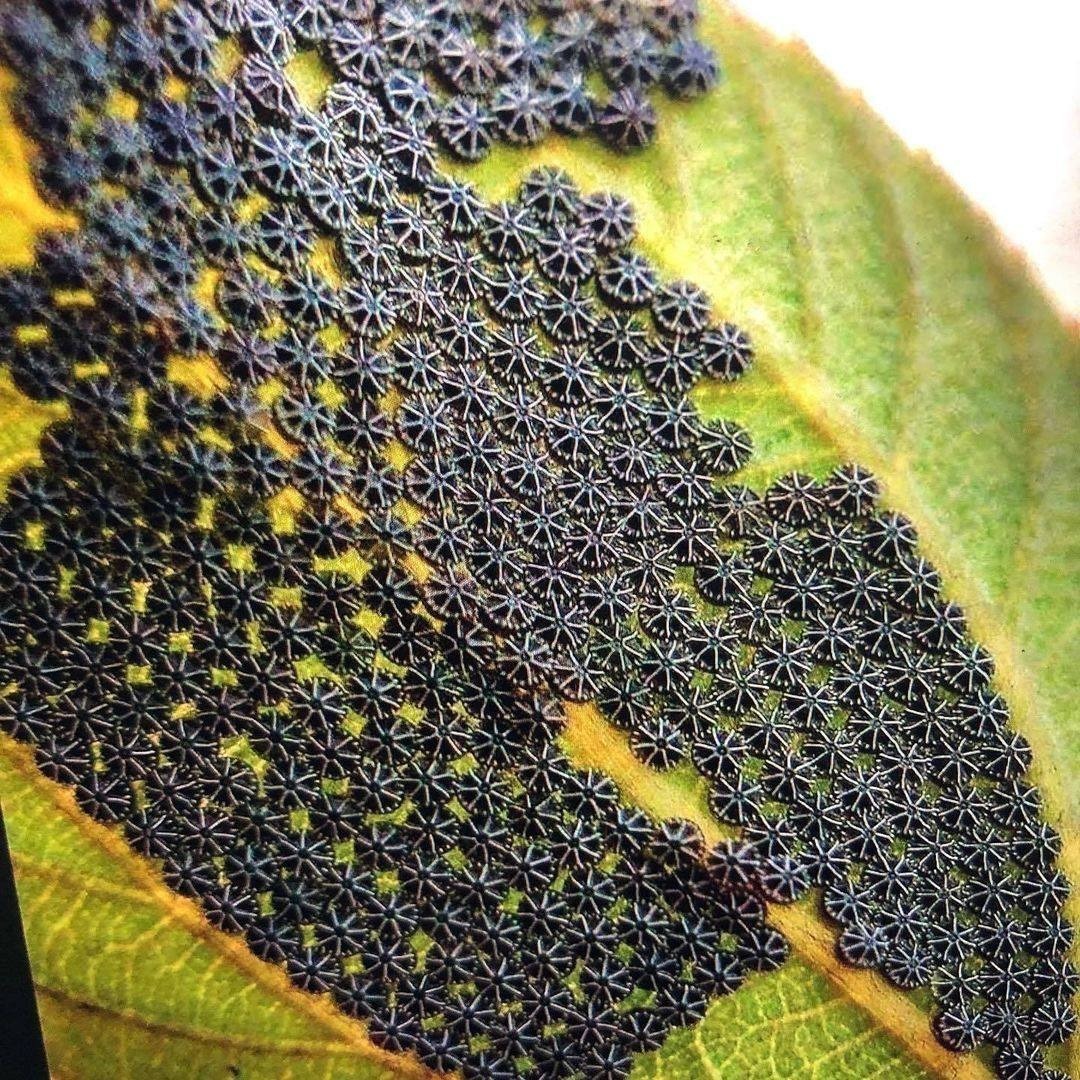One of life’s greatest pleasures is tending a garden. It’s fulfilling to see your plants flourish and to enjoy the veggies (or fruits!) you’ve grown. However, the world isn’t always a bed of roses. The battle against pests is ongoing, and in the insect world, distinguishing friends from foes can be challenging.
Recently, a social media photo caught my attention: a leaf adorned with intricate black geometric designs. It was so unusual it could have been a plant disease or something from another planet! My initial reaction, like many others’, was concern. However, upon closer inspection, these intriguing patterns turned out to be the eggs of Nymphalis antiopa butterflies.
A Butterfly’s Enchanting Mourning Cloak
Let me introduce you to the Mourning Cloak butterfly, in case you’re not familiar with this fascinating species. Its captivating life cycle and unique features make it an ecological marvel.
Let’s start with those mesmerizing eggs. From a distance, they resemble a delicate layer of black lace adorning the leaves. On closer examination, their unexpected beauty becomes evident. Clusters of these eggs showcase the perfect geometry found in nature.
Initially, like many gardeners, I felt a mix of wonder and apprehension. “Will they be beneficial or harmful?” I wondered. I’m happy to report some excellent news!
Friend or Foe? Why Mourning Cloak Butterflies Are Beneficial
see continuation on next page
ADVERTISEMENT
